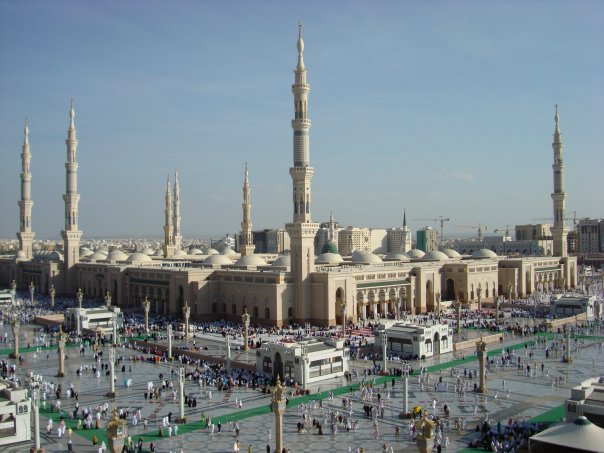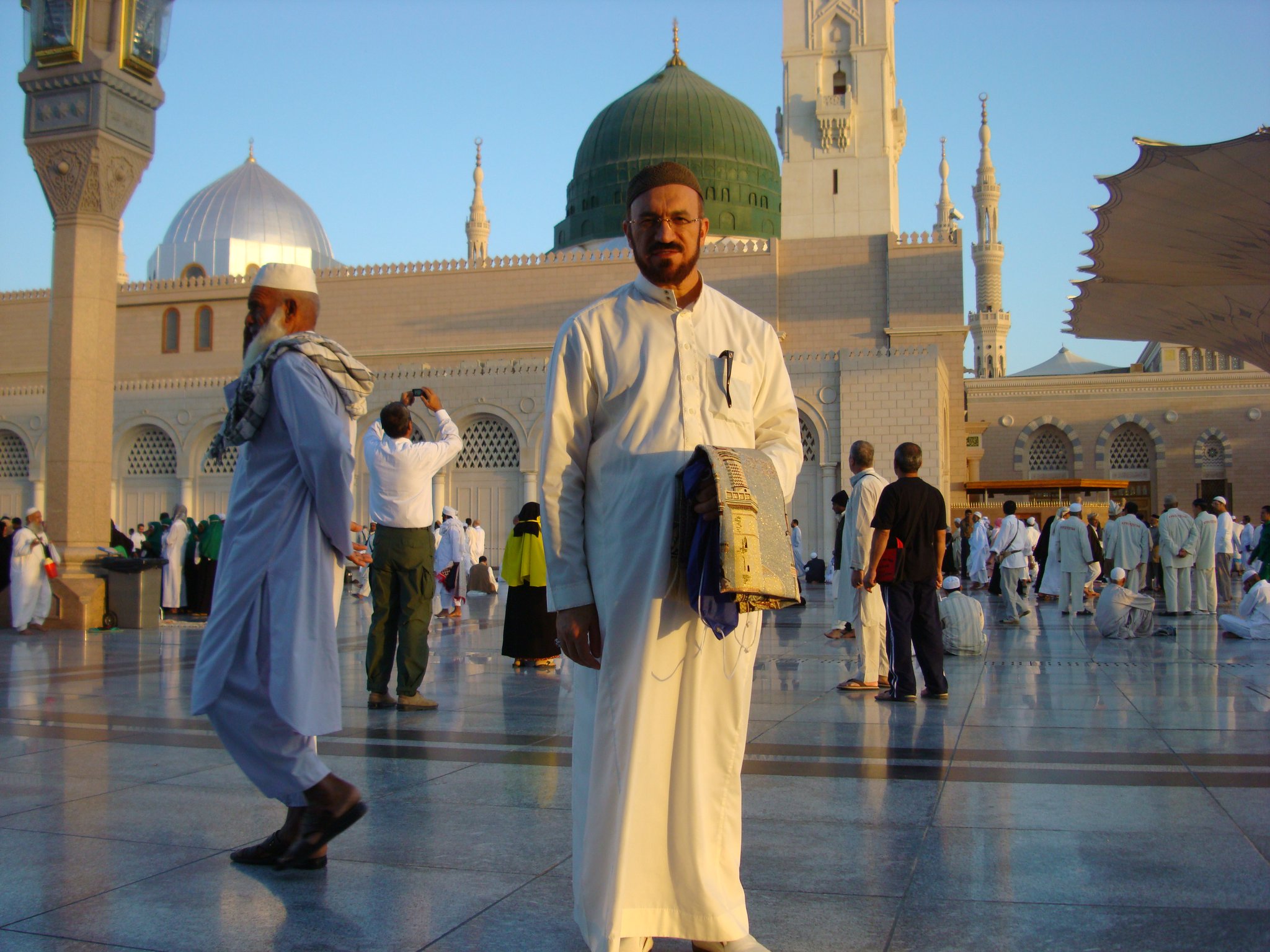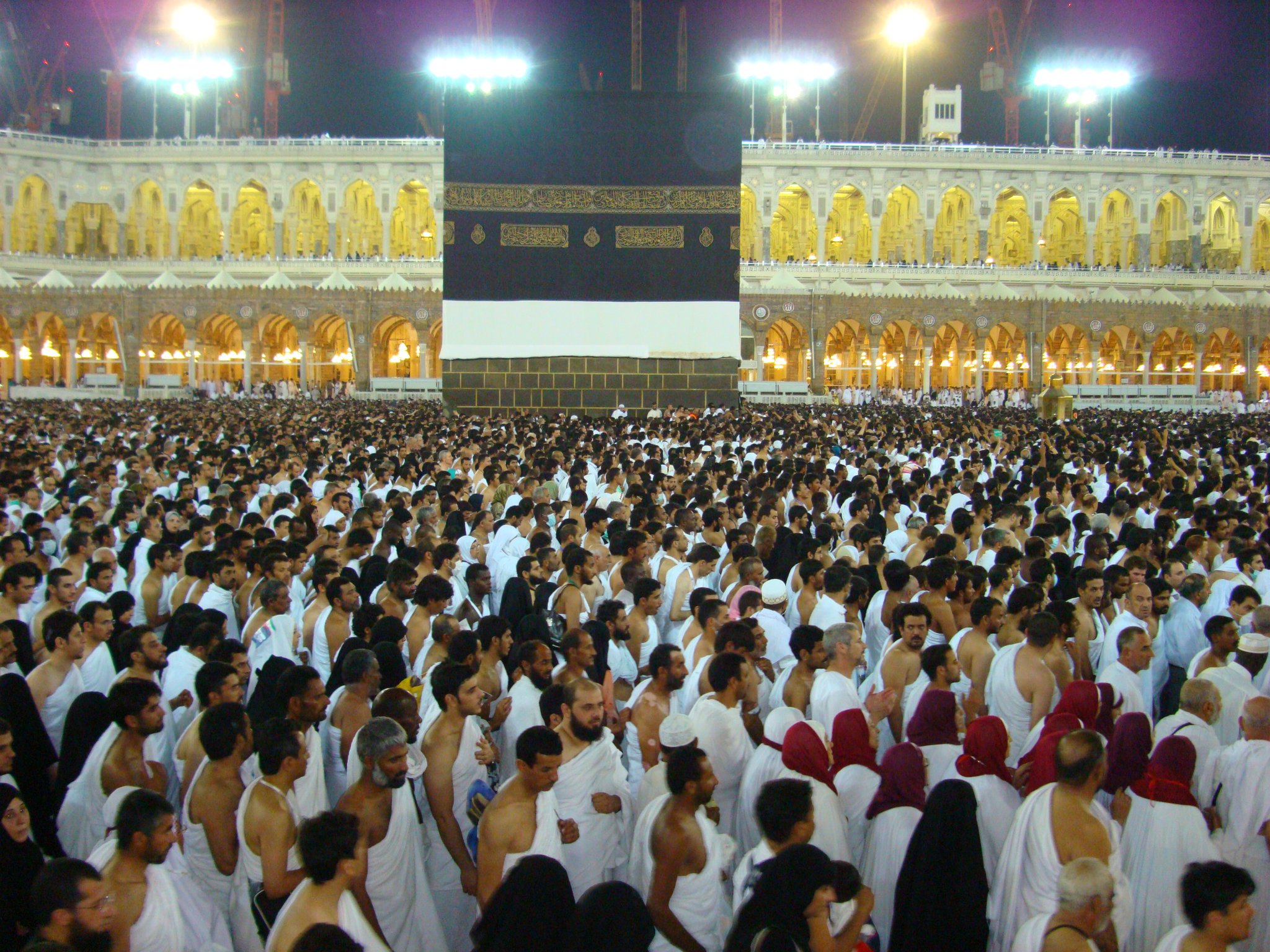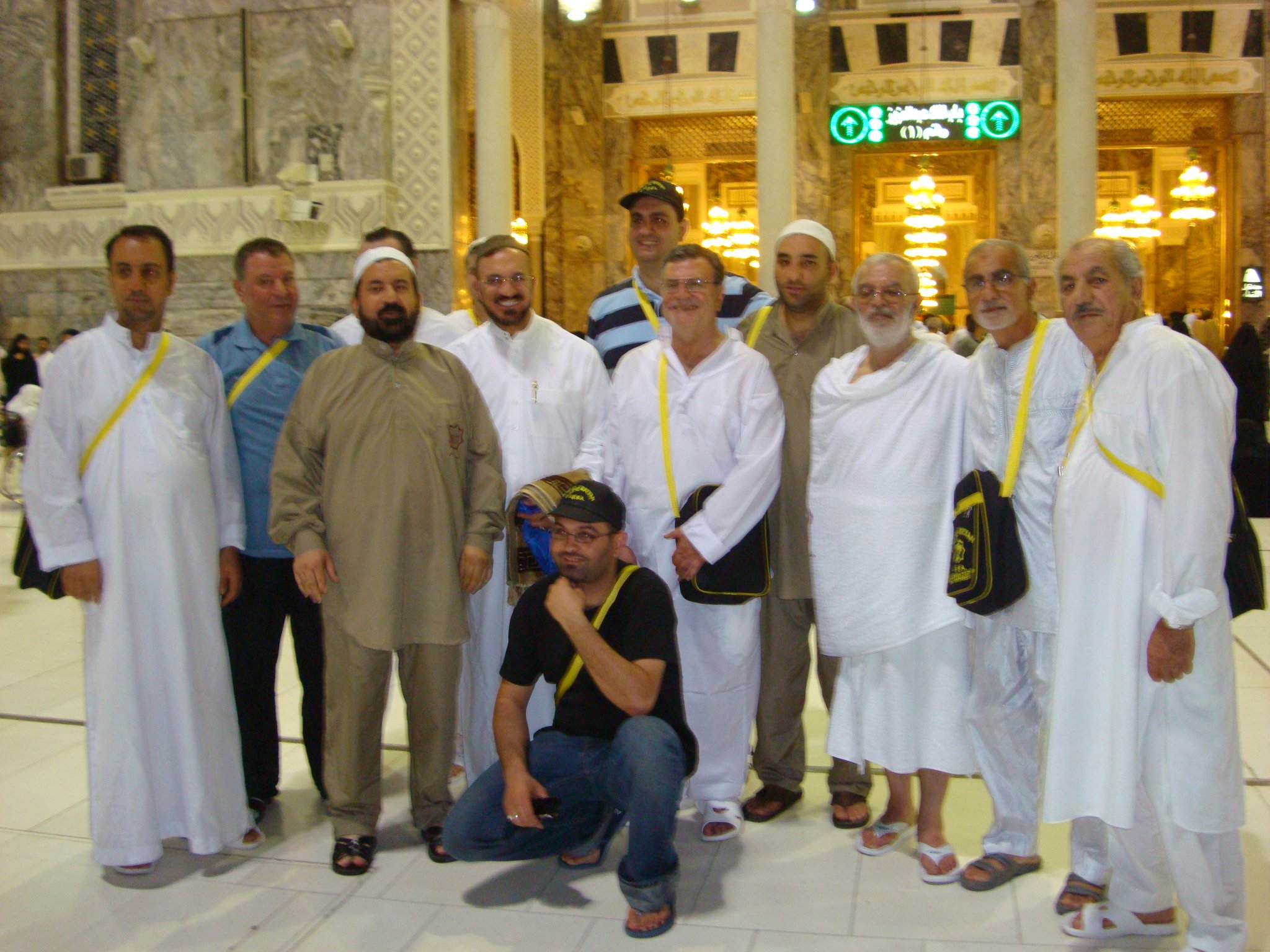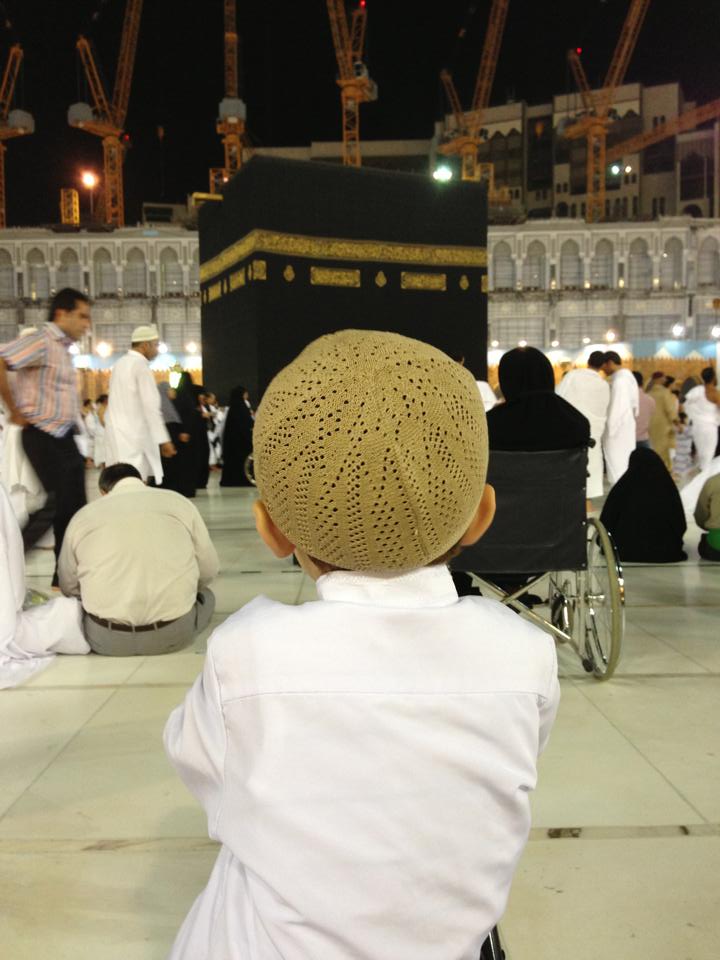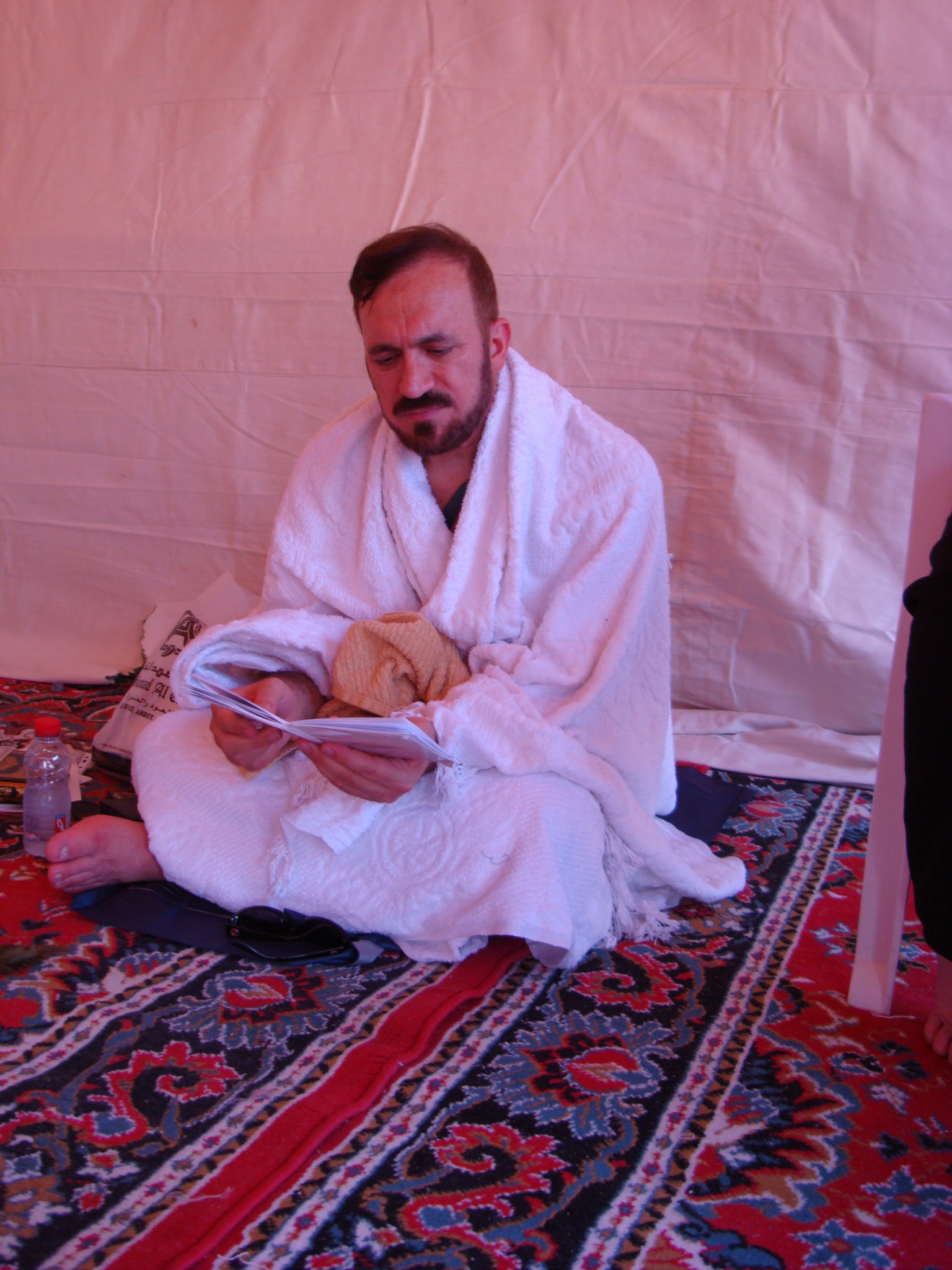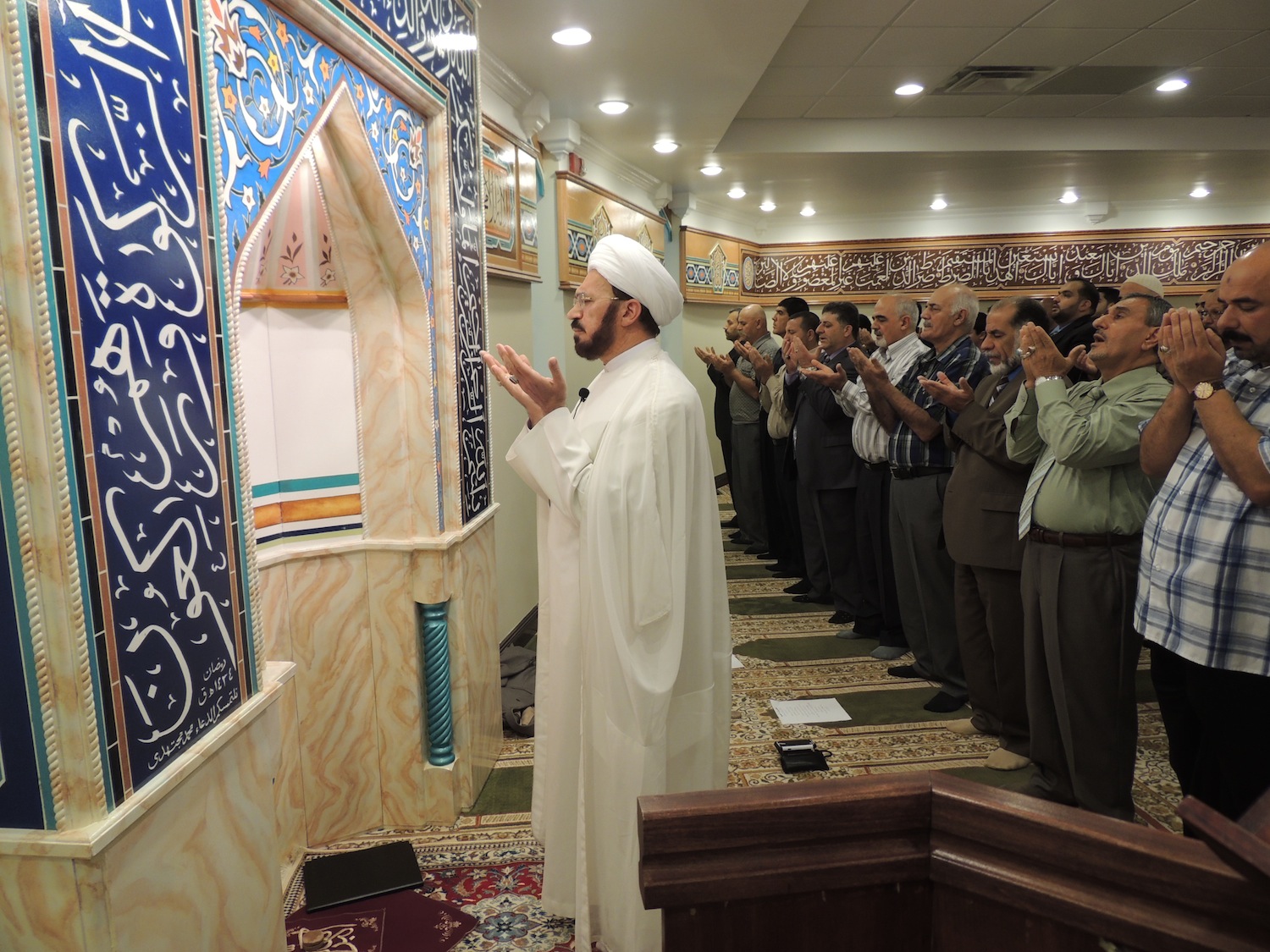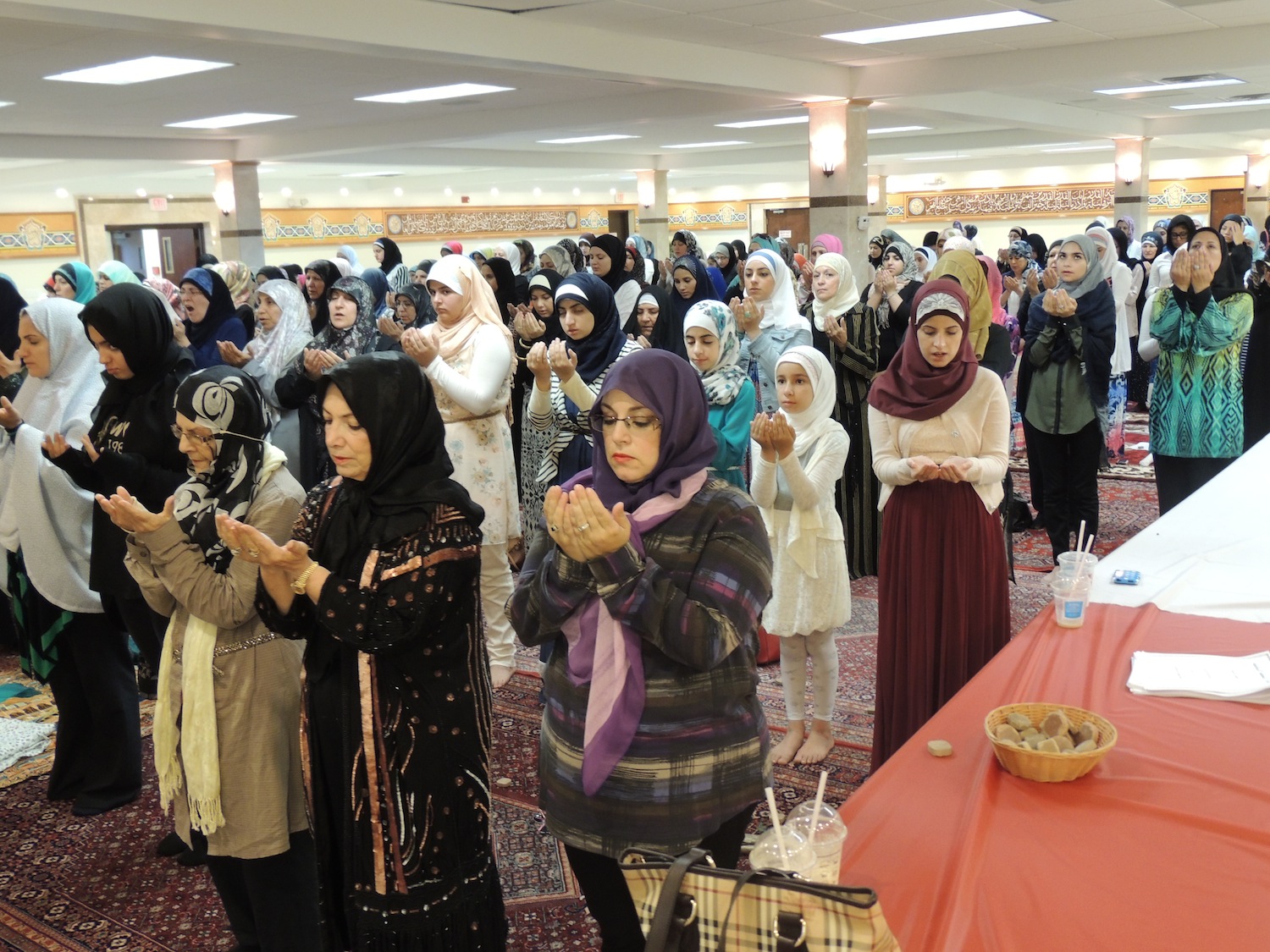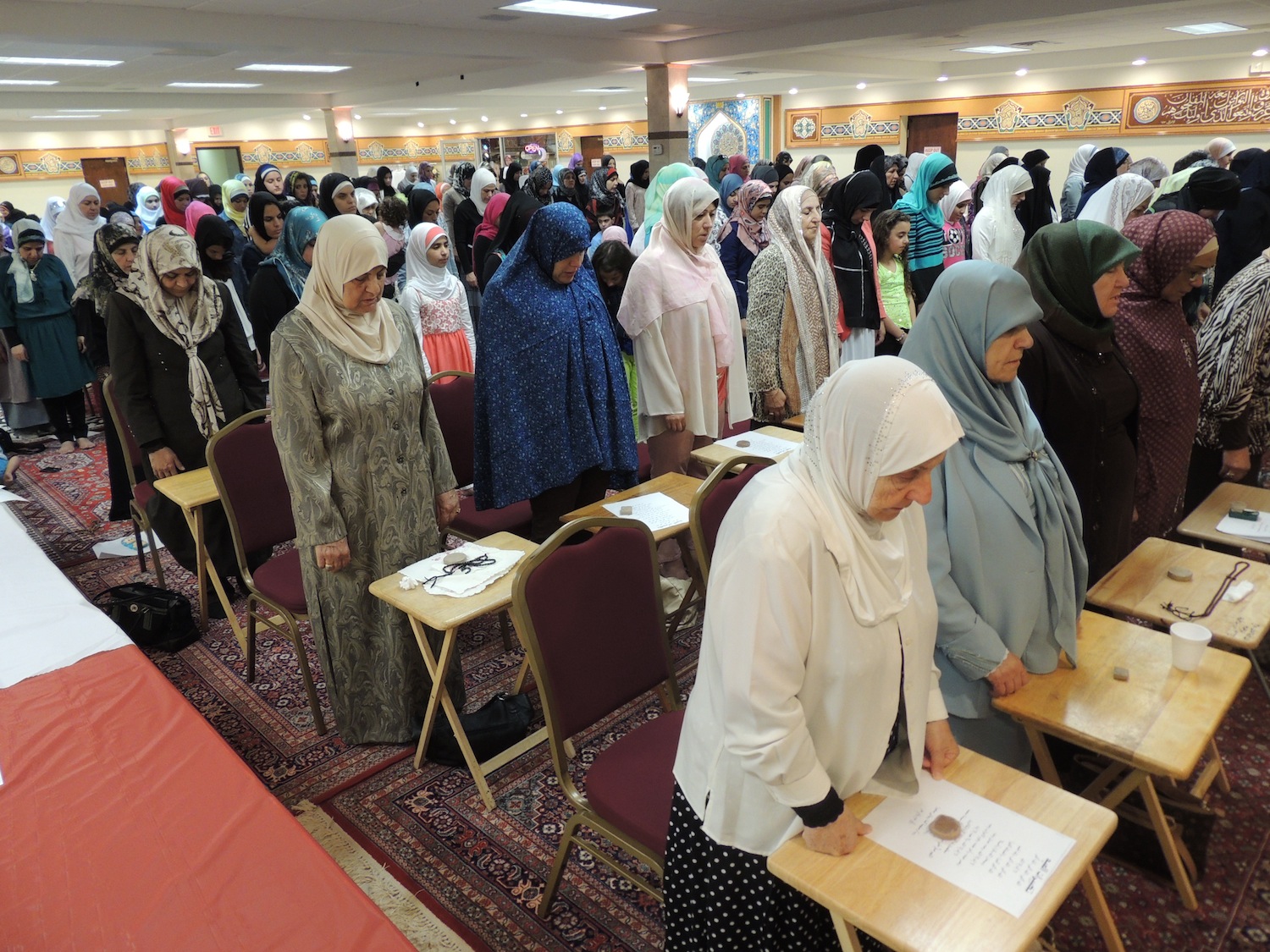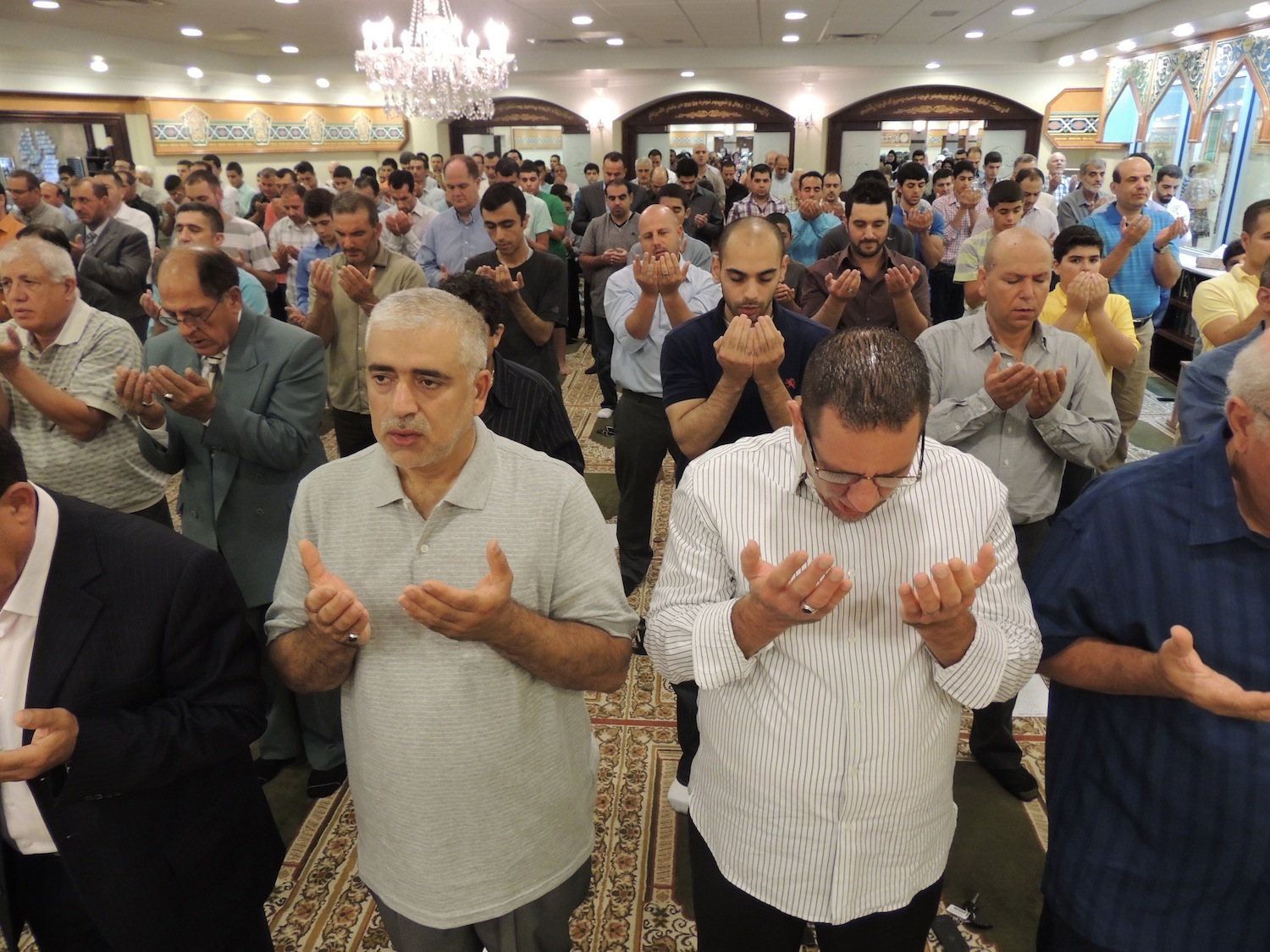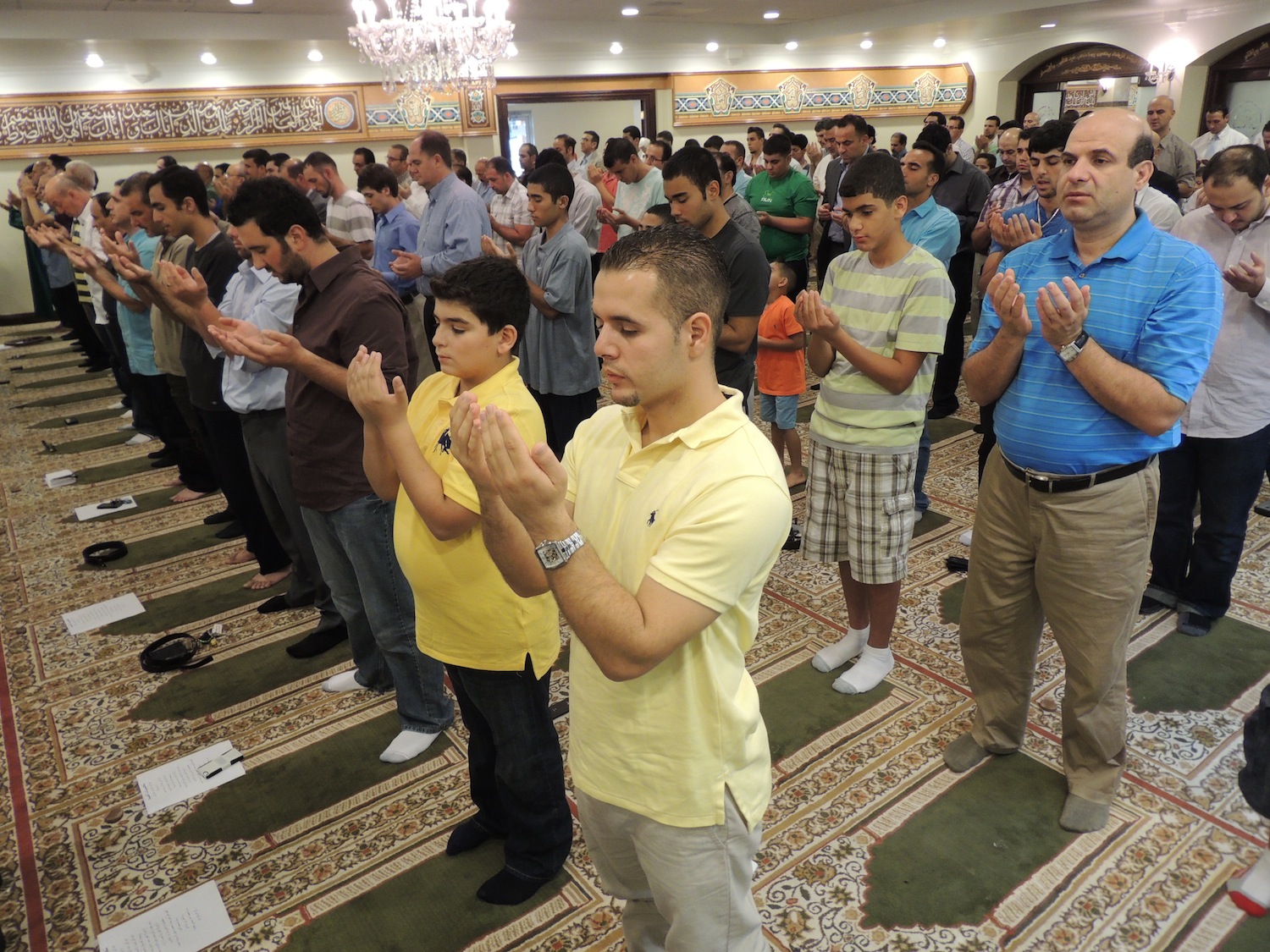About Hajj
Informational Links: Click HERE
Hajj (The Pilgrimage) by Dr. Ali Shariati
Hajj Guide saba-igc.org Guide to performing Hajj compiled from various sources for Hajj. Includes rulings, details about ziyaraat, philosophy in brief, maps, and traveling instructions.
The Area Inside and Surrounding the Holy Rawdah of the Prophet's Mosqu
Eid Al-Adha
Although only the pilgrims in Makkah can participate in the Hajj fully, all of the other Muslims in the world join with them by celebrating the Eid Al- Adha, or Festival of Sacrifice.
On the 10th of Dhul-Hijjah, Muslims around the world attend a special prayer gathering in the morning. This is followed by a short sermon. The traditional Eid greeting is "Eid Mubarak," which means "Holiday Blessings." Next, people visit each other's homes and partake in festive meals with special dishes and desserts. Children receive gifts and sweets on this joyous occasion. Many partake in community service projects to include those who are in need.
In addition,like the pilgrims in Makkah, those Muslims who can afford to do so offer domestic animals, usually sheep, as a symbol of Abraham's sacrifice. The meat is distributed for consumption to family, friends, and to the poor and needy.
The Eid Al-Adha is a major religious event in the lives of Muslims. Usually, communities celebrate this occasion over a period of several days.
The Ka'ba: What Is It Really?
by: Masooma Beatty | Islamic Insights
The Ka'ba is called Bait Allah, or "the House of God". But we know God needs no house and is not confined to any space. It is also called the first house of mankind. Yet no human is known to have ever lived in it, so what does that mean? It is certain that Prophet Ibrahim (peace be upon him) constructed the Ka'ba. But before he built it, when he moved Lady Hajra and Prophet Ismail (peace be upon them) to the empty desert, he said, "O Our Lord! I have made some of my offspring to dwell in a valley without cultivation, by Thy Sacred House..." (14:37) So he was already aware of the Ka'ba before he built it! Many scholars say that the Ka'ba was first built by Prophet Adam (peace be upon him), but the structure had since wasted away. All agree that it existed at least somehow prior to Prophet Ibrahim.
The Ka'ba is like the Bait al-Mamur (the Oft-Frequented House) and is said to be built directly under it. The Bait al-Mamur is a house that angels circumambulate and enter and is located in the fourth heaven. Several traditions state that Adam had prayed at that house as well. So to understand the Ka'ba, we need to understand the Bait al-Mamur.
What is the significance of Bait al-Mamur? It turns out that both the Ka'ba and the Bait al-Mamur are symbols of how God brings about and attends to His creation.
To understand what that means, we have to first understand how the decrees of Allah come to reality. The Qur'an states, "And your Cherisher-Lord creates what He wishes..." (28:68) and, "Surely His commanding is such that, when He desires a thing, He just says to it 'Become!', and it becomes." (36:82) These two verses describe creation as Mashi'ah (wishing), Iradah (desiring), and Amr (commanding), as well as symbolizing it by speech of Allah. All of these indicate that creation is the production of the outcome of Allah's Mashi'ah. A narration from the Ahlul Bayt (peace be upon them) says, "Allah created the Wish through itself, then He created the things through the Wish." The Wish is symbolized as "the Water" or "Waters" in Qur'an and narrations. For example, "And from the Water We made everything alive." (21:30) Scholars tell us this verse also shows that every created thing is alive in some fashion. The fact that water (H2O) is repeatedly described as a Mercy from Allah contributes to the symbolism of the Wish from which creation begins as the ultimate Mercy of the Creator.
The Creator-created relationship is a polar one, with the Creator in the seat of guardianship and authority. This position of guardianship is referred to in the Qur'an as Arsh, which is translated most often as "throne" (raised, shaded seat of authority) or "empyrean" (the highest heaven). As Allah is not confined to a body, it does not mean a literal chair throne. The Arabic verbal root meaning of Arsh is a pillared structure raised from the ground. The Wish descends from and is beneath the empyrean "...and His empyrean was over the Water." (11:7) Imam Zainul Abideen (peace be upon him) has said that in the Arsh, or empyrean, is a likeness of every created thing, and this is the meaning of "And there is not a thing except that its treasuries are with Us." (15:21) The empyrean is also the gate of Allah's administration over Creation: "He projects His guardianship uniformly to all creation over the empyrean; He administers the command." (10:3)
Imam Ali (peace be upon him) has said that the empyrean is a cubical structure made of four pillars of light - one white, one yellow, one green, and one red. The white light is the light of consciousness (Aql) and knowledge and is the first, foundational pillar. Its symbol in the Qur'an is the pen (Qalam). The green light is the Preserved Tablet (Lawh Mahfuz), the record or soul (31:28) of creation in the empyrean. The yellow light pillar is the Spirit (Ruh) as mentioned in chapter 17, verse 85 of the Qur'an. It is through the Spirit that prophets and those close to Allah receive their knowledge and power. Ruh is related to rih, the wind. Thus, according to Imam Baqir (peace be upon him), just as the Wish is symbolized by water, the Spirit is symbolized by wind - a movement and energy that effuses everything. The red light of the empyrean is the bloodline that connects the empyrean to the physical universe or nature; it carries all the vibrations of created things.
So the Ka'ba is itself an Arsh, representing the Arsh of Allah, the highest heaven. Like the empyrean, it is a cube, with four corners mirroring the four corners of the empyrean. Imam Sadiq (peace be upon him) quoted the Prophet (peace be upon him and his progeny) about this correspondence: "The Ka'ba is called the Ka'ba because it is square-based. It is square-based because it is in correspondence to the Bait al-Mamur. The Bait al-Mamur is square-based because the empyrean is square-based. The empyrean is square-based because the phrases upon which Islam is based are four: Subhanallah, Alhumdulillah, La Ilaha Illa Allahu, and Allahu Akbar." The corner with the black stone corresponds to the corner of the empyrean of the white light (consciousness). Incidentally, some narrations say that the black stone is actually white, but blackened by repeated touching. As pilgrims move around the Ka'ba, they move past the pillars of consciousness (white), then Spirit (yellow), then Soul (green), then nature (red).
With this knowledge, we can understand why we face toward the Ka'ba when we pray. We are facing toward the symbol of the highest heaven where from Allah's guidance, mercy, and creation are all projected. So facing toward the Ka'ba symbolizes facing towards the gateway between the physical universe and Allah. This does not imply that Allah is confined out of the physical universe, but rather refers to the methodology of creation, guardianship, and bestowal of mercy.
Scholars have noted that the Ka'ba is empty and has in its cubic shape all cardinal directions in three dimensions. All to be seen there is absoluteness and eternity. It is not a shrine. It is a symbol, a projection, a source of connection to the highest heaven, and an opening for the descent of Allah's Wish into manifestation in the physical universe. Some narrations indicate that the creation of the land of the Earth began at the location of the Ka'ba, as it is the origin of physical creation. It is the symbol of our original home as we manifest from Wish in the empyrean, and that is why when we go for pilgrimage, we do not pray shortened prayers like travelers. We are going back to our source.
The Hajj rites are highly steeped in symbolism. We recreate the actions of Prophet Ibrahim and Lady Hajra to represent and learn from their deeds. Therefore, it is probable that the symbolism of the Ka'ba as the Arsh has a significant meaning in the context of those rites and our understanding of our roles in the universe and in the Ummah. Knowing that the Ka'ba is itself a symbol can give us much to ponder about the possible meanings of events in history, such as Imam Ali (peace be upon him) being born in the Ka'ba. At the very least, the Ka'ba as a symbol of the Arsh has very deep implications about the direction we face when we pray.
References:
The History of Ka'ba by Hasan Zafar Naqvi
Islam Dynamic: The Cosmology, Spirituality and Practice of Walayah by Idris Samawi Hamid
Hajj: Reflections on its Rituals by Ali Shariati
Article posted on: www.playandlearn.org

